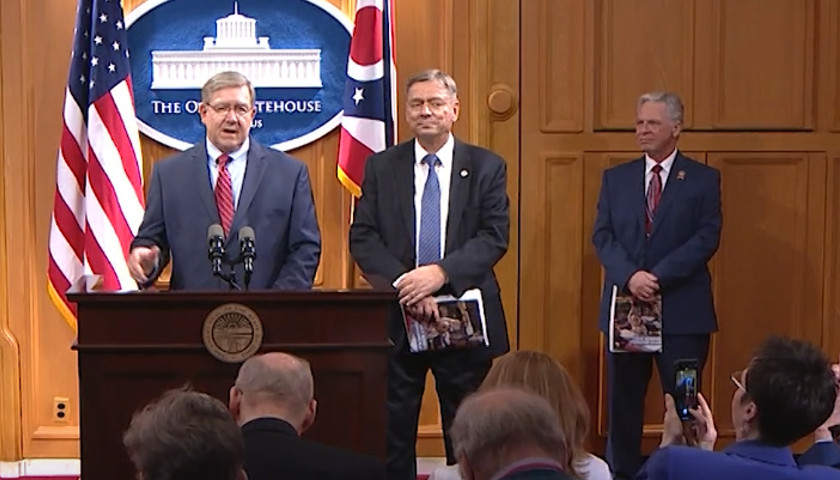After 15 months, a bipartisan workgroup unveiled its Fair School Funding Plan to overhaul Ohio’s school-funding formula, but some still had questions about how it will accomplish what Ohioans need.
Reps. Bob Cupp (R-Lima) and John Patterson (D-Jefferson) spearheaded the workgroup along with superintendents and educators from across the state, and announced their findings during a Monday press conference.
“We are excited because we’re here to announce the release of the School Funding Workgroup’s recommendations for comprehensive redesign of Ohio’s primary and secondary school funding framework,” Cupp said, calling the new funding plan “fair, more predictable, and more workable.”
“It’s widely recognized that our current funding formula, forged in the last recession, is seriously flawed. Experience has shown that it’s not any longer even functioning as a formula,” he continued, saying the current funding formula is “more a patch than a formula.”
At the start of the 15-month process, the School Funding Workgroup was charged with considering “what our students truly need to succeed in this rapidly changing world, and to develop recommendations to meet those needs that are fair to Ohio’s kids, school districts, and taxpayers.”
“Over four-fifths of districts are either on a cap, which limits the funding they would get under the formula, or a guarantee, which props up the funding they’re not getting under the formula,” Cupp explain.
The new funding formula calls for respecting “local control” and doing away with funding “caps and guarantees.”
“There are two sides of this that are critically important. One side is the base cost. The question that should’ve been asked decades ago, the question that drove us: what does it cost to educate a typical student in a typical town in Ohio,” Patterson added. “The other side: how are we going to pay for it? The distribution side.”
A breakdown of the Fair School Funding Plan includes:
- 60 percent for classroom instruction
- 15 percent for “instructional and student supports”
- 20 percent for school operations
- 5 percent for “direct administration and financial management”
“75 percent right to the needs of the students,” Patterson noted. “95 percent goes directly to where the students learn.”
The new funding formula also calls for adding funds for “poverty and mental health,” helping “special needs, gifted, and English-language learners,” improving “security and safety,” investing in “career tech centers,” and promoting “STEM skills.”
Greg Lawson, research fellow at The Buckeye Institute, applauded Patterson and Cupp “for digging so deeply into one of Ohio’s most important and complex areas of government,” but said it’s “not clear how this plan will accomplish what Ohioans so desperately deserve and need – good academic outcomes for our children that gives them the tools they need for future success.”
“Increasing government spending, without addressing critical underlying reforms to the entire education system, is a recipe for higher taxes with more students continuing to fall behind. We have been down this road for decades and yet continue to have the same debate,” Lawson said. “We need a system where money follows the student and can be used to pay for the education services that best meet the student’s individual needs, whether that be traditional public schools, charter schools, or private schools.”
Patterson and Cupp’s full press conference can be watched here:
– – –
Anthony Gockowski is managing editor of Battleground State News, The Ohio Star, and The Minnesota Sun. Follow Anthony on Twitter. Email tips to [email protected].
Photo “State Rep John Patterson and Bob Cupp” by The Ohio Channel.





